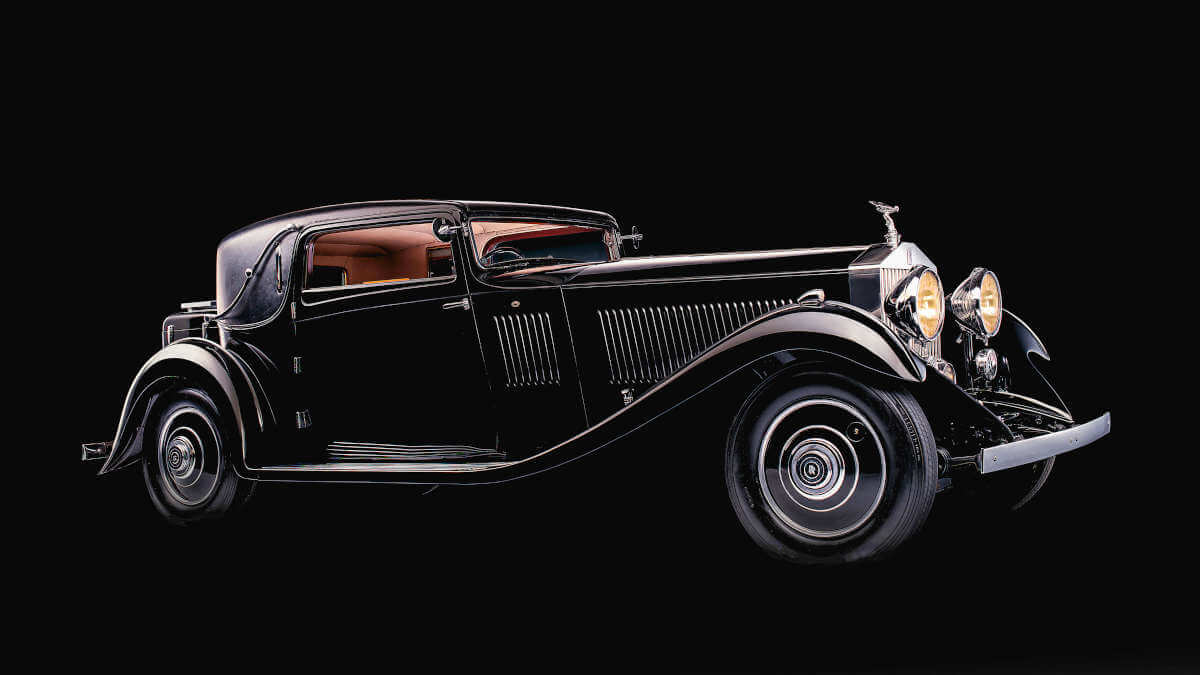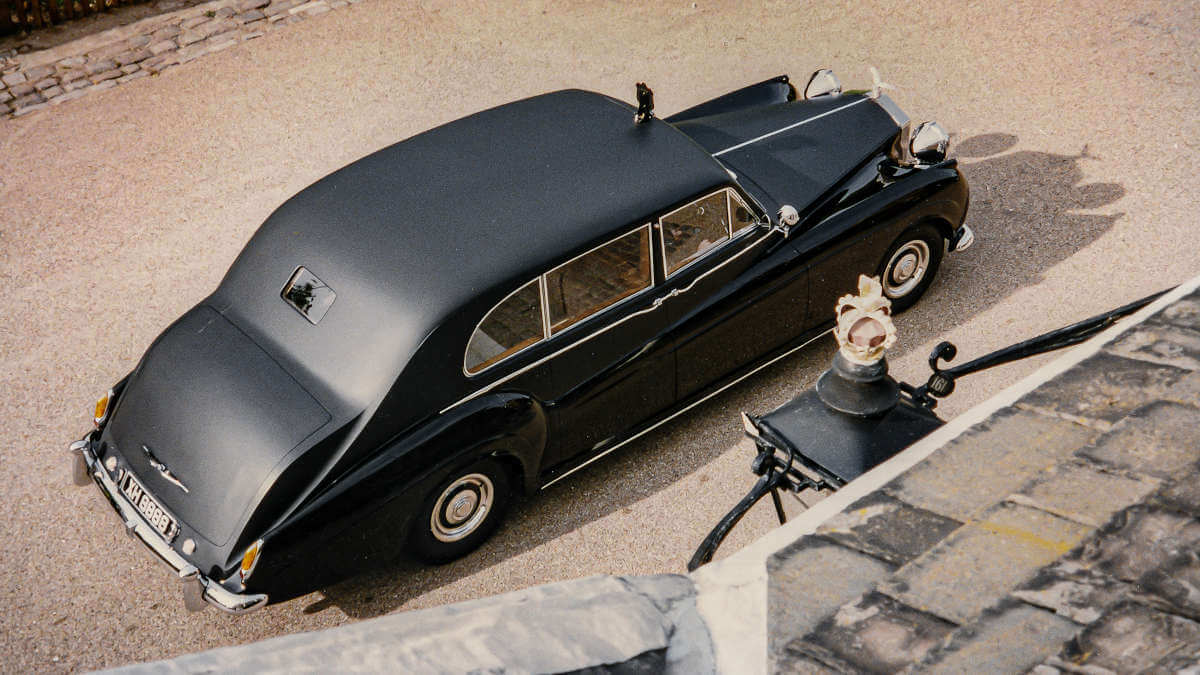Rolls-Royce – The history of Black Badge
Rolls-Royce has been producing vehicles under the Black Badge label for several years now, with which the luxury brand aims to appeal to a younger clientele. In addition to more colorful interior colors, these model variants also receive a slight performance upgrade. The Cullinan, Dawn and Wraith currently form the basis for this special series. Few customers, however, are aware that the Black Badge models were based on historical models for which individual customers expressed special equipment wishes. In a recent press release, the brand looks back on three examples, which we would like to present in more detail here.
1933 Phantom II Continental (94MY)
Under the experimental abbreviation 26EX, a special Rolls-Royce Phantom II Continental with shorter chassis and compact coupé bodywork was produced from 1930. In order to achieve a good weight distribution, the two spare wheels were moved from the front fender extensions to the rear of the car. This experimental model was created at the request of the company’s co-founder Henry Royce by the designer Ivan Evernden. Based on his drawings, the body was created with a retracted subframe for greater stability at Barker & Co. With the completed car Ivan Evernden and Don Carlos de Salamanca took part in a Concours d’Elegance in Biarritz. There they won the Grand Prix d’Honneur. Rolls-Royce then decided to produce a small series of this chassis variant. With chassis number 94MY, the first corresponding car went to Samuel Coxhill in 1933 with a body by Gurney Nutting. Combining style and performance, this is where Black Badge originated.






1960 Phantom V (5AT30)
In 1959, the fifth generation model of the Rolls-Royce Phantom debuted, also replacing the Silver Wraith. As in the pre-war era, the Phantom V was to be aimed primarily at customers who wanted to use the car in chauffeur-driven operations. For this reason, the vast majority of examples were given a classic saloon body and a dark, mostly black paint finish. HRH Henry, The Duke of Gloucester, third son of King George V, ordered a special car with the chassis numebr 5AT30, which was built in 1960. Coachbuilder James Young created the body design under the internal abbreviation PV15. This design existed for further examples and is considered today as one of the most elegant for the Phantom V. However, HRH chose some special features for his car. All horizontal surfaces in the upper area received matt black paint, while the vertical parts below the beltline shine with glossy black paint finish.
Specially equipped
Added were larger headlights, fog lights, auxiliary lights, smaller taillights, exterior door mirrors and sliding shutters for the rear windows. Instead of the well-known Spirit of Ecstasy radiator mascot, the Duke mounted his own mascot, an eagle in flight. In addition, this car, probably the first in the brand’s history, received an umbrella along with a holder. HRH Henry and his wife used this Rolls-Royce regularly for trips. So also on 30 January 1965, when they drove to the funeral of Sir Winston Churchill. On the way home, the car skidded off the wet road and overturned three times down a steep embankment. None of the occupants was seriously injured. Moreover, the car could be repaired and served as the Duke of Gloucester’s transportation for many years.










1965 Phantom V (5VD73)
Already one year before HRH’s accident, The Beatles had their musical breaktrough with the song “A Hard Day’s Night”. John Lennon took this as an opportunity to order his own Rolls-Royce Phantom V in December 1964. His order was taken by the dealer R.S. Mead in Maidenhead. Unsurprisingly, Lennon had some special requests. He wanted an all-black car inside and out. As a part of this he wanted the chrom trim and all stainless steel parts on the exterior in shining black as well. Mulliner Park Ward created the body and also painted the rims and bumpers in black as requested. Only with the famous radiator grille and the Spirit of Ecstasy was Rolls-Royce able to successfully insist on chrome. As one of the first cars on British roads, the Phantom V also received darkened rear windows made of reflective Triplex Deeplight glass.
Unusual interior
John Lennon not only wanted to protect himself from unwanted glances. He was also thinking of dawn drives homw from gigs and parties. While the sun was rising outside, it was still comparatively dark in the rear of the car. For this reason, he had also had the partition glass to the cockpit darkened. The rear seats were upholstered in black nylon and black cord cloth from Bedford. The driver and front passenger sat on leather seats. Electrically operated antennas were on board for the radio and the Perdio Portarma television set. It is possible, that the car later also received a record player, radio telephone, refrigerator, folding tables and red ambient lighting. However, these details don’t appear in the production books. Only a seven-piece luggage set appears there. A few years later, Lennon had the Rolls-Royce repainted yellow with a psychedelic design.
Image: Rolls-Royce




